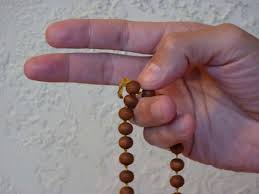வன துர்க்கா மந்திரம்:
அஸ்ய ஸ்ரீ வன துர்கா மஹாமந்த்ரஸ்ய பகவான் ஆரண்ய ருஷி: அனுஷ்டுப்பு சந்த: ஸ்ரீ வனதுர்கா தேவதா தும் பீஜம் ஸ்வாஹா சக்தி ஹரீம் கீலகம் ஸ்ரீ வன துர்கா பிரசாதேன சர்வ துக்க விமோசநார்த்தே ஜபே விநியோக:
ஓம் உத்திஷ்டபுருஷி அங்குஷ்டாப்யாம் நம:
ஓம் கிம்ஸ்வபிஷி தர்ஜநீப்யாம் நம:
ஓம் பயம் மேசமுபஸ்திதம் மத்யமாப்யாம் நம:
ஓம் யதி சக்ய மசக் கியம் வா அனாமிகாப்யாம் நம:
ஓம் தன்மே பகவதி கனிஷ்டிகாப்யாம் நம:
ஓம் சமய ஸ்வாஹா கரதலகரப்ருஷ்டாப்யாம் நம:
ஓம் உத்திஷ்டபுருஷி ஹ்ருதாய நம:
ஓம் கிம்ஸ்வபிஷி ஸிரசே ஸ்வாஹா
ஓம் பயம் மேசமுபஸ்திதம் சிகாயைவௌஷட்
ஓம் யதி சக்ய மசக் கியம் வா கவசாய ஹூம்
ஓம் தன்மே பகவதி நேத்த்ரத்தராய வௌஷட்
ஓம் சமய ஸ்வாஹா அஸ்த்ராய பட்
பூர்புவஸ்ஸுவரோம் இதி திக் பந்த:
அஸ்ய ஸ்ரீ வன துர்கா மஹாமந்த்ரஸ்ய பகவான் ஆரண்ய ருஷி: அனுஷ்டுப்பு சந்த: ஸ்ரீ வனதுர்கா தேவதா தும் பீஜம் ஸ்வாஹா சக்தி ஹரீம் கீலகம் ஸ்ரீ வன துர்கா பிரசாதேன சர்வ துக்க விமோசநார்த்தே ஜபே விநியோக:
ஓம் உத்திஷ்டபுருஷி அங்குஷ்டாப்யாம் நம:
ஓம் கிம்ஸ்வபிஷி தர்ஜநீப்யாம் நம:
ஓம் பயம் மேசமுபஸ்திதம் மத்யமாப்யாம் நம:
ஓம் யதி சக்ய மசக் கியம் வா அனாமிகாப்யாம் நம:
ஓம் தன்மே பகவதி கனிஷ்டிகாப்யாம் நம:
ஓம் சமய ஸ்வாஹா கரதலகரப்ருஷ்டாப்யாம் நம:
ஓம் உத்திஷ்டபுருஷி ஹ்ருதாய நம:
ஓம் கிம்ஸ்வபிஷி ஸிரசே ஸ்வாஹா
ஓம் பயம் மேசமுபஸ்திதம் சிகாயைவௌஷட்
ஓம் யதி சக்ய மசக் கியம் வா கவசாய ஹூம்
ஓம் தன்மே பகவதி நேத்த்ரத்தராய வௌஷட்
ஓம் சமய ஸ்வாஹா அஸ்த்ராய பட்
பூர்புவஸ்ஸுவரோம் இதி திக் பந்த:


